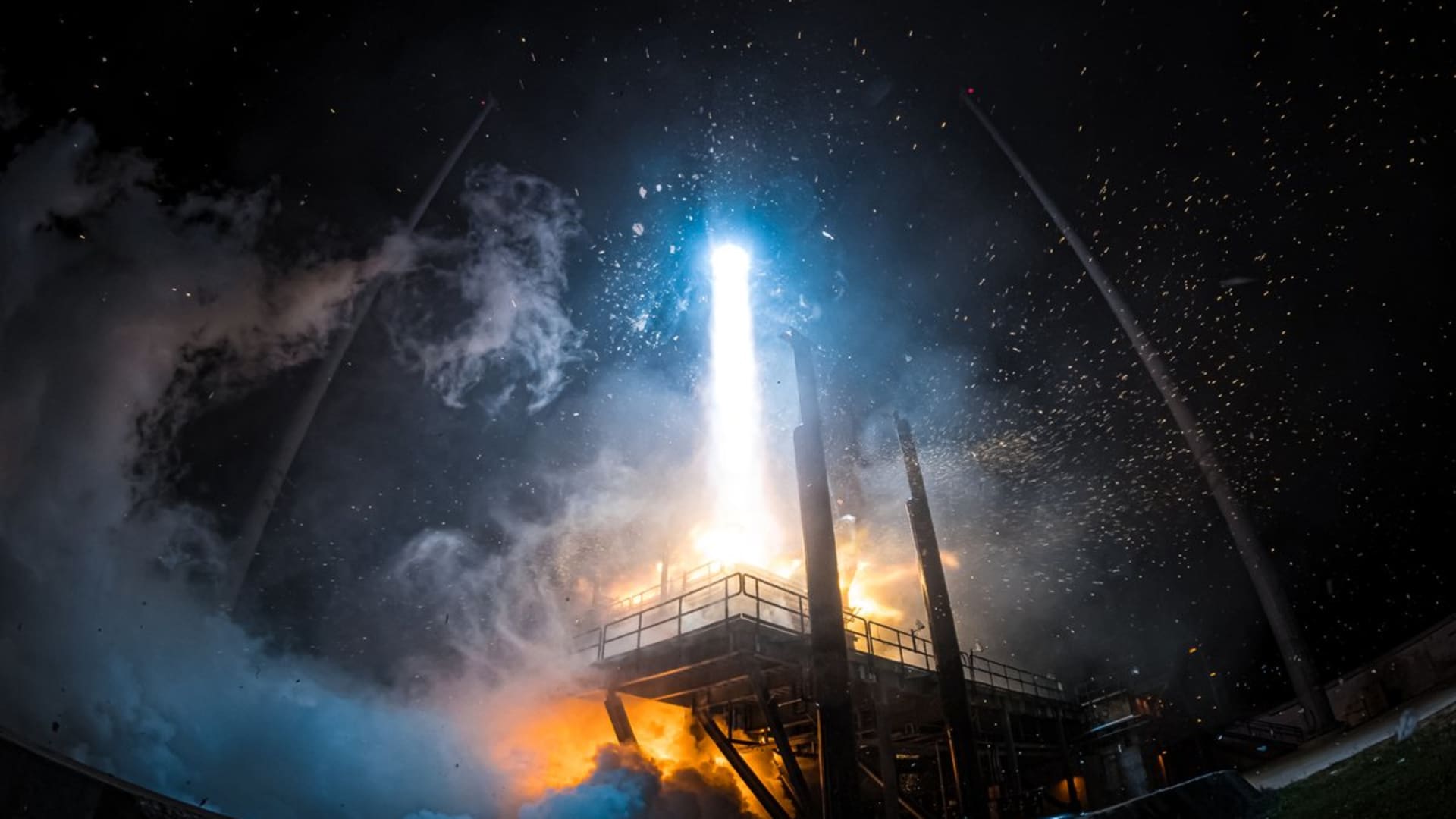CNBC’s Investing in Space newsletter offers a view into the business of space exploration and privatization, delivered straight to your inbox. CNBC reports and curates the latest news, investor updates and exclusive interviews on the most important companies reaching new heights. This week’s edition was guest writtetn by CNBC’s Morgan Brennan, co-anchor on “Closing Bell: Overtime” and host of the “Manifest Space” podcast. Sign up to receive future editions.
It’s been a week since Starship lifted off from the Texas coast and exploded four minutes later in flight. While it didn’t reach space, the most powerful rocket ever built marked a milestone and shined a light on a broader industry trend: building bigger rockets.
While there’s nothing else quite like SpaceX’s fully reusable mega system in development, other launch startups are adapting to a marketplace that’s demanding more power and more capacity, more quickly.
Take Relativity Space, a CNBC Disruptor 50 company valued at more than $4 billion, that has emerged as the posterchild of the trend. The space startup is already retiring its pioneering 3D-printed Terran 1 to focus exclusively on a new heavy-lift rocket called Terran R. While a powerful vehicle was always apparently part of the plan, Terran 1 – after seven years of development — flew for just the first time last month (reaching space but falling short of its intended orbit).
“Customers are telling us there just is not enough launch supply or launch capacity, period, in the world up to about 2027 or 2028,” Tim Ellis, chief executive and co-founder of Relativity Space, told me in a recent interview for CNBC’s “Manifest Space” podcast. “There’s a giant launch shortage, and the only company that I think can actually fill it besides Relativity would be SpaceX. The problem is SpaceX is developing their own satellite constellation, Starlink, and so there’s a bit of a conflict of interest.
Follow and listen to CNBC’s “Manifest Space” podcast, hosted by Morgan Brennan, wherever you get your podcasts.
“SpaceX is a really good option, but SpaceX is also going to compete against them as they launch their own payloads into space,” Ellis added, suggesting Elon Musk’s famously disruptive space company’s launch dominance needs to be, well, disrupted.
But Relativity isn’t alone in its bet to go bigger. Blue Origin has been developing its heavy-lift New Glenn rocket, which is now poised to fly for the first time next year, and Lockheed Martin–Boeing joint venture United Launch Alliance is hoping to launch its heavy-lift Vulcan Centuar sometime this summer after a recent explosion during testing delayed plans for early May. Even Rocket Lab is busy developing a more powerful rocket than its current small launch-focused Electron. The company’s Neutron rocket will cater to the “medium-lift” market when it begins operating in 2024.
To be sure, Terran R isn’t comparable to SpaceX’s Starship or even Falcon Heavy. It’s looking to compete most directly with SpaceX’s workhorse Falcon 9. Targeting 2026 for first flight, the new Terran R will tout the ability to deliver up to 26 tons to low earth orbit in a reusable mode or 37 tons in an expendable one (meaning the first stage booster isn’t recovered to be reused). By comparison, Falcon 9, with its reusable first stage, can transport just over 25 tons to low earth orbit.
Ellis said Relativity already touts a $1.65 billion backlog with another several billion dollars’ worth of active deal negotiations. He expects the customer mix to break down to between 80% and 90% commercial, with government contracts comprising the rest.
Relativity has raised $1.3 billion to date from a list of investors that include BlackRock, Fidelity and Baillie Gifford, and plans to remain private for the time being. The company started its journey at Y Combinator, where Sam Altman was a direct partner and mentor to Ellis.
Perhaps not surprisingly then, since Altman is the chief executive of ChatGPT-parent OpenAI, Ellis has been discussing regenerative A.I. with Altman and how its evolution could apply to Relativity’s manufacturing process as it races to build its bigger rocket.
“3D-printing is really just a digital manufacturing technology that takes all of the human labor, all the complex parts … and puts them into a more software- and data-driven form, which A.I. actually can interface with a lot better,” Ellis said in the “Manifest Space” interview.
More powerful rockets and new manufacturing possibilities dovetail into an ambitious long-term vision: “We’re focused on building the industrial base on Mars, so that’s really the way that 3D-printing tech will eventually go … You need a factory that’s lightweight, that can build a wide range of products with very little human involvement and labor,” Ellis said.
“I do see that it’s certainly possible and somebody needs to at least give it an honest try just make it happen. That’s what we’re here to do.”
CNBC’s weekly “Manifest Space” podcast focuses on the billionaires and brains behind the ever-expanding opportunities beyond our atmosphere. Morgan Brennan holds conversations with the mega moguls, industry leaders and startups in today’s satellite, space and defense industries. In “Manifest Space,” sit back, relax and prepare for liftoff.

